In Operation Hadal, the sole military-themed film to compete in the lucrative Spring Festival holiday market, the biggest star isn't an award-winning actor or a household celebrity — it's a 120-meter-long nuclear submarine.
As the first feature-length film to revolve around deep-sea submarine warfare in the century-long history of Chinese cinema, the film, under the helm of Hong Kong director Dante Lam, has captured widespread attention from military enthusiasts.
With a runtime of 146 minutes, the movie has grossed 323 million yuan ($44.3 million) at the box office since its domestic debut on Jan 29, the first day of the Year of the Snake.
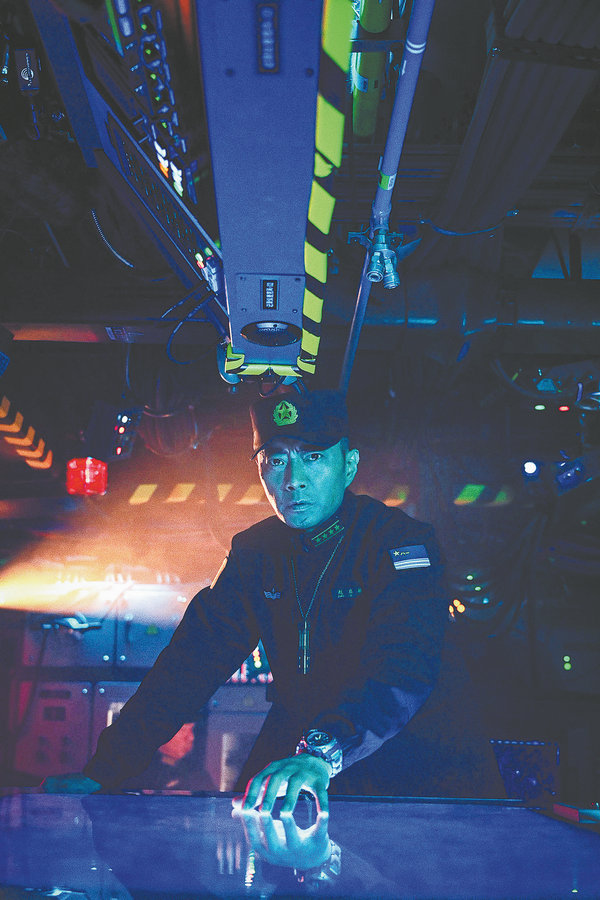
A scene from the Spring Festival film Operation Hadal features actor Zhang Hanyu as the captain of the cutting-edge nuclear submarine Longjing (Dragon Whale). [Photo provided to China Daily]
The new movie is a follow-up to Lam's action-packed Operation Red Sea, loosely based on China's evacuation of stranded citizens from Yemen during its 2015 civil war. Amassing 3.65 billion yuan in ticket sales, Operation Red Sea became the highest-grossing film of 2018.
Reprising some stars who play members of the Jiaolong Squad, an elite unit of the Chinese People's Liberation Army Navy, the film fictionalizes a new threat that jeopardizes national security. Set in the near future, the Chinese navy intercepts crucial intelligence — a powerful submarine conspiring in a top-secret military operation targeting cities along China's southeastern coast.
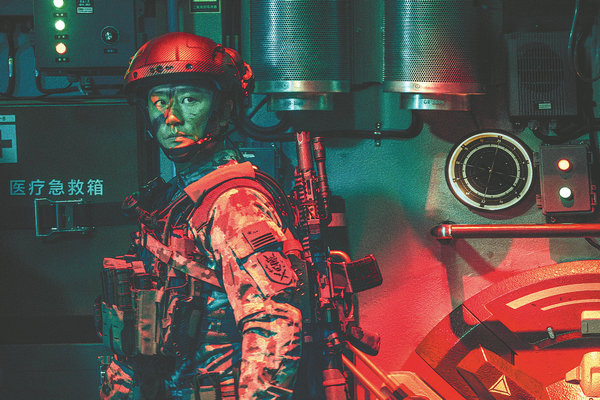
Huang Xuan portrays the leader of the Jiaolong Squad, an elite unit of the People's Liberation Army Navy. [Photo provided to China Daily]
In response, China dispatches Longjing (Dragon Whale), a cutting-edge nuclear submarine, to dive deep into the ocean while assigning the Jiaolong Squad to investigate the wreckage of the enemy's sunken submarine. However, as navy officials and soldiers descend into the depths, they find themselves entangled in a perilous underwater battlefield teeming with unforeseen dangers and hidden threats.
Yu Dong, the film's chief producer and president of Bona Film Group, shares that the movie has fulfilled his decades-long dream of making a film about the rise of China's naval forces.
As a child, he came across The Naval Battle of 1894, a classic film depicting the First Sino-Japanese War (1894-95). Watching Deng Shichang, an admiral of the Qing Dynasty's (1644-1911) Imperial Chinese Navy, steer the Zhiyuan cruiser in a heroic yet tragic attempt to sacrifice himself in trying to ram and sink the Japanese flagship Yoshino, Yu was moved to tears.
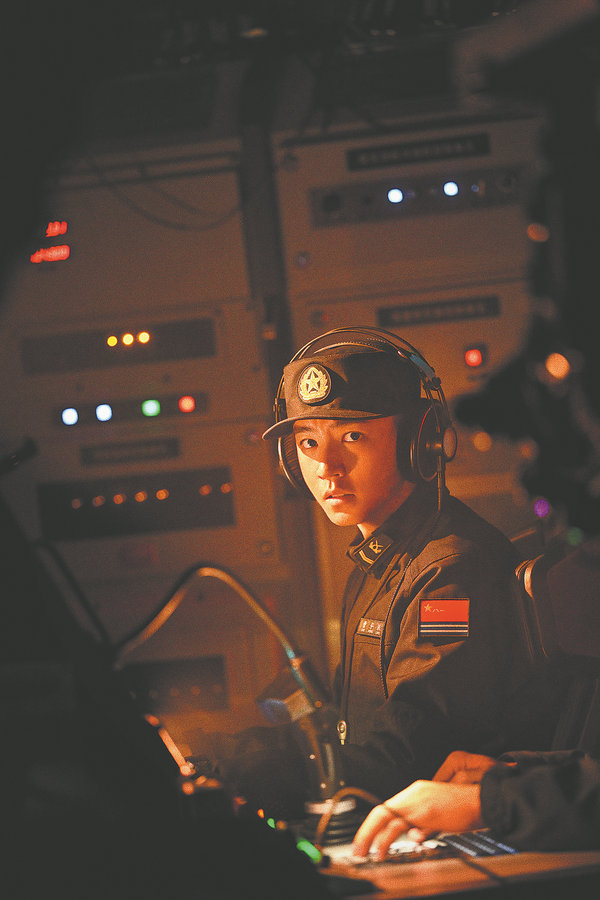
Wang Junkai stars as a sonar operator on the submarine. [Photo provided to China Daily]
Over recent decades, China has made great strides in advancing military science and research. Submarines, as a crucial part of naval forces, have been hailed as the "underwater blade" of modern warfare due to their stealth and high-tech capabilities.
Seven years ago, Yu obtained official support to produce films about the Chinese navy, with Operation Red Sea becoming the first big-budget title of its kind. Since then, he and director Lam have embarked on a journey akin to scientific research, delving into the lesser-known world of submarines — one of the most mysterious forces in modern military strategy.
Citing Chairman Mao Zedong's famous 1959 slogan, "Even if it takes 10,000 years, we must develop our own nuclear submarines", Yu reveals that their original plan was to create a biographical project about Huang Xuhua, the mechanical engineer hailed as "the father of China's nuclear submarines".
"During a time of extreme scarcity, Chinese scientists independently developed and built our first nuclear submarine," Yu recalls, reflecting on how he was deeply moved by the dedication and devotion of the country's first-generation submarine designers.
However, believing that today's audience — especially younger viewers — are more eager to see what China's modern naval nuclear submarine forces look like, Yu and Lam decided to shift the storytelling to a contemporary setting.
As a leading figure in the action film genre, director Lam had previously collaborated with Yu on other blockbusters like Operation Mekong and The Battle at Lake Changjin.
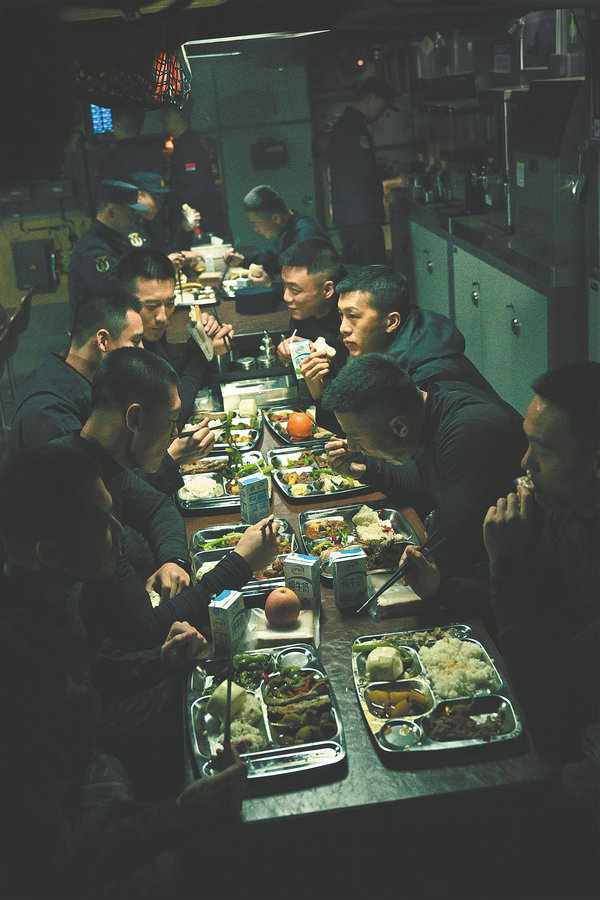
A still shows Chinese navy sailors eating dinner in the canteen inside a submarine. [Photo provided to China Daily]
"I was surprised and delighted when I heard that we were going to produce a submarine warfare film. I have a passion for military-themed movies, but I also felt stressed about how to accurately depict and present submarines," recalls Lam, adding that he hopes it will surpass Operation Red Sea.
During the early preparation stages, Lam and the production team visited research institutes, universities and technical units, conducting extensive research over a long period. They studied a vast amount of materials and consulted many experts and advisers.
In the past, deep-sea film scenes were often depicted as dark and murky, making it difficult to clearly see the underwater terrain. However, for an action blockbuster spanning over two hours, the film had specific visual and lighting requirements, posing a major challenge during the script and visual effects planning stages — how to effectively utilize the underwater landscape to showcase the strategic tactics and strike capabilities of the Chinese navy, explains Lam.
To secure realism, the crew built four life-size submarine models at a film production base in Qingdao, Shandong province. Aside from Longjing, which measures 11 meters in width and 16 meters in height, they also dug a 140-meter-long, 17-meter-deep pool to house it outdoors.
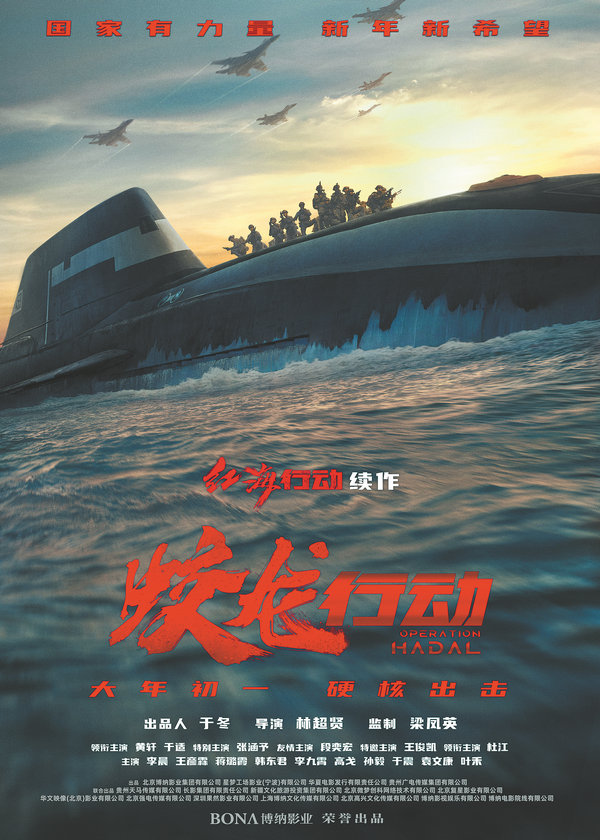
A poster for the film. [Photo provided to China Daily]
Additionally, the production utilized soundstages covering a total of 46,000 square meters, over 8,000 square meters of workshops and, at its peak, employed up to 1,500 crew members. A total of 16 types of submarine-related weapon props were created, along with 10 different Jiaolong Squad uniforms designed to suit various combat environments.
During filming, Lam maintained his signature style — bold, relentless, and pushing the limits. He personally operated a camera, diving deep with the actors for underwater scenes and joining them in wirework stunts for submarine rollover sequences.
Yu recalls that when he visited the set in Qingdao during winter, he was still shivering from the cold even while wrapped in a thick coat.
"At the time, the director strapped himself in with just his feet on the wire rig, hanging completely upside down while holding the camera to film underwater," Yu adds.
"Although a massive boiler was installed by the pool to raise the water temperature, it was still difficult to make it feel warm given the outdoor conditions. When everyone got out of the water, they were shivering, spraying hot water over themselves to warm up. After an entire day of filming, the footage captured might only amount to a few seconds in the final cut. To complete the sequence, they endured these conditions for more than 10 days," shares Yu.
According to data from the popular movie database IMDb, Operation Hadal was also released in Singapore and the United States.
When asked about expectations for overseas markets, Yu expressed hope that the new movie will showcase the rapid progress of the Chinese film industry, while also raising interest in Chinese stories among more foreign audiences.